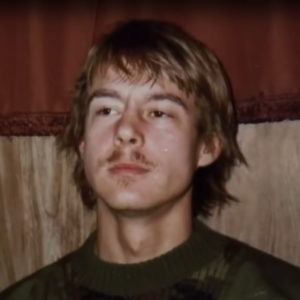The information for this biography was sourced primarily from the VICE production Hamilton’s Pharmacopeia and follow-up coverage of the show by Dallas Observer contributor Daniel Rodrigue.
Ken Nelson was a researcher, psychonaut, artist, veteran, and conservation advocate who dedicated decades of work to studying the Sonoran desert toad, or Bufo alvarius. He famously authored and published in 1983 a pamphlet entitled Bufo Alvarius: The Psychedelic Toad of the Sonoran Desert under the pen name Albert ‘Al’ Most. The pamphlet provides an overview of the species and detailed instruction on extracting and using the venomous gland secretions, which possess the psychoactive compound 5-MeO-DMT. It also describes the brief and intense high that follows: “Within thirty seconds, there will be an onset of almost overwhelming psychedelic effects. You will be completely absorbed in a complex chemical event characterized by an overload of thoughts and perception, brief collapse of the ego, and loss of the space-time continuum.” The text and accompanying illustrations by Gail Patterson are available on Erowid.org.
Nelson’s interest in B. alvarius sparked when he read an article in a 1981 issue of Omni magazine that covered an archeologist’s excavation of toad bones. Fascinated by the indication of indigenous use of the animal, Nelson began independent research that led him to Gila, Arizona to find the source. An updated edition of his pamphlet states,
In the Department of Life Sciences at the University of North Texas [Nelson] encountered the work of Italian toxicologist Dr. Vittorio Erspamer, whose comprehensive chemical analysis of toad venoms showed that among the 40 species he analyzed from the genus Bufo, a single one, Bufo alvarius (syn. Incilius alvarius), was capable of biosynthesizing 5-MeO-DMT.
In Gila, Nelson found the toad and smoked its dried venom – he is ostensibly the first person in the modern age to do so.
Concern for the species’ population moved Nelson to attempt to develop a chemical synthesis process for 5-MeO-DMT. Biosynthetic 5-MeO-DMT would enable access to the compound’s therapeutic benefits while protecting the toad from overexploitation. For more than twenty years, Nelson lived at a shuttered missile base in Denton, Texas, where he researched and worked toward this goal.
The Reveal
Hamilton Morris, the chemist featured in the psychedelic docuseries Hamilton’s Pharmacopeia, sought to unveil the real Al Most. During his search, imposters claimed to be the famed author. Among them was Alfred Savinelli, a student of indigenous plant use whom Morris had mistakenly exposed as the real Al Most in a 2017 episode.
Nelson’s identity remained a mystery to the public until Hamilton’s season three premiere (2020). Nelson had written a note to Morris after the 2017 episode aired that read,
Hey, Hamilton, I heard you were looking for Albert Most. Perhaps I can help you fill in the missing pieces of your puzzle. I am Albert Most. I wrote about the toad. I smoked the toad venom. I’m Albert Most. Let’s talk sometime. Ken, Denton, Texas.
In the episode, Morris repents his error and chronicles Nelson’s legacy, documenting his decades of Bufo research and advocacy with the help of his friends Gail Patterson, Hollis Whitson, and Scott Sellers. Morris then completed a lab synthesis of 5-MeO-DMT (covered here by Psychedelic Science Review) and republished the Bufo pamphlet under Nelson’s real name. Sales from the first reprint raised $35,000 for research on Parkinson’s Disease, which took Nelson’s life in October 2019.
In a 2021 interview, Morris told Amanda Siebert of Forbes,
Ken’s work really has been influential, and we see this toad appearing more and more in pop culture…It’s evidence this has stepped out of the realm of being a gag on The Simpsons or Family Guy, and is actually becoming a significant cultural force that threatens the livelihood of the toad.
